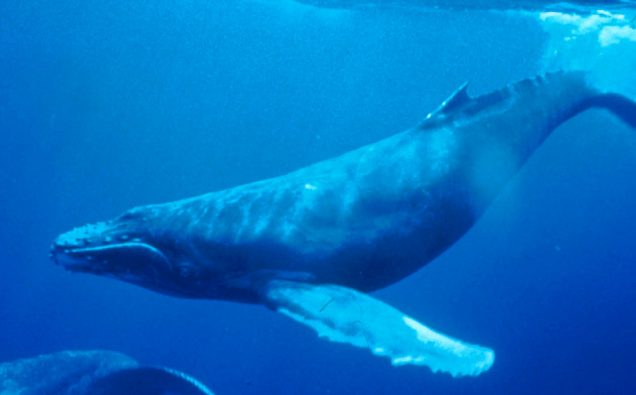
Oceans are experiencing a disturbing extinction pattern that may wipe out large animals with precarious ramifications for marine ecosystem, warns a new study.
“The preferential threat to large-bodied marine animals poses a danger to ecosystems disproportionate to the percentage of threatened species. Large-bodied animals are critical to ecosystem function because of their preferential position at the top of food webs and importance to nutrient cycling and bioturbation of sediments,” researchers found.
The findings by Jonathan L. Payne,1,*, Andrew M. Bush,2, Noel A. Heim,1, Matthew L. Knope,3, Douglas J. McCauley appeared in journal Science.
“The Earth is experiencing something it has never experienced before,” said study leader Jonathan Payne, a paleobiologist at Stanford University. “Biologically, we are going into uncharted territory.”
“We might be skimming off the top of the food web, or changing the distribution of temperature and energy,” said Noel Heim, a postdoctoral researcher in Payne’s lab and a coauthor on the study. “A blue whale diving down to feed might mix a whole lot of ocean water. A larger clam will mix more sediments than a smaller one.”
“We’ve found that extinction threat in the modern oceans is very strongly associated with larger body size,” says Jonathan Payne.
The study shows is that for every factor of 10 increase in body mass, the odds of being threatened by extinction go up by a factor of 13 or so. Payne says: “The bigger you are, the more likely you are to be facing extinction.”
Here are some of the conclusions of the research:
“The preferential threat to large-bodied marine animals poses a danger to ecosystems disproportionate to the percentage of threatened species. Large-bodied animals are critical to ecosystem function because of their preferential position at the top of food webs and importance to nutrient cycling and bioturbation of sediments .
Removal of large-bodied predators can also trigger trophic cascades affecting many other species. Although previous mass extinctions did not preferentially remove the largest taxa, the sheer magnitude of loss across the body-size spectrum entailed the extinction of many of the largest species, and surviving genera may have become smaller as well. The loss of large taxa may have caused more ecological disruption than the loss of comparable numbers of smaller taxa; indeed, loss of large animals may explain in part the multimillion-year delays in ecosystem recovery following these catastrophes.
The preferential removal of the largest animals from the modern oceans, unprecedented in the history of animal life, may disrupt ecosystems for millions of years even at levels of taxonomic loss far below those of previous mass extinctions.
And, unfortunately, the lack of correlation between the proportion of species assessed within higher taxa (phyla, classes, and orders) and the proportion considered threatened for marine animals suggests that the pessimistic projection of future genus losses may more closely approximate the true threat level than the optimistic projection.
Without a dramatic shift in the business-as-usual course for marine management, our analysis suggests that the oceans will endure a mass extinction of sufficient intensity and ecological selectivity to rank among the major extinctions of the Phanerozoic (541 Ma to present). Such an event would usher the world not only into a new geological epoch (Anthropocene) but also into a new period (Anthropogene) or even a new era (Anthropozoic).”













